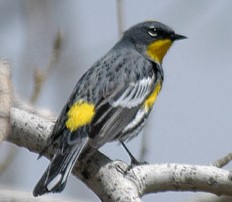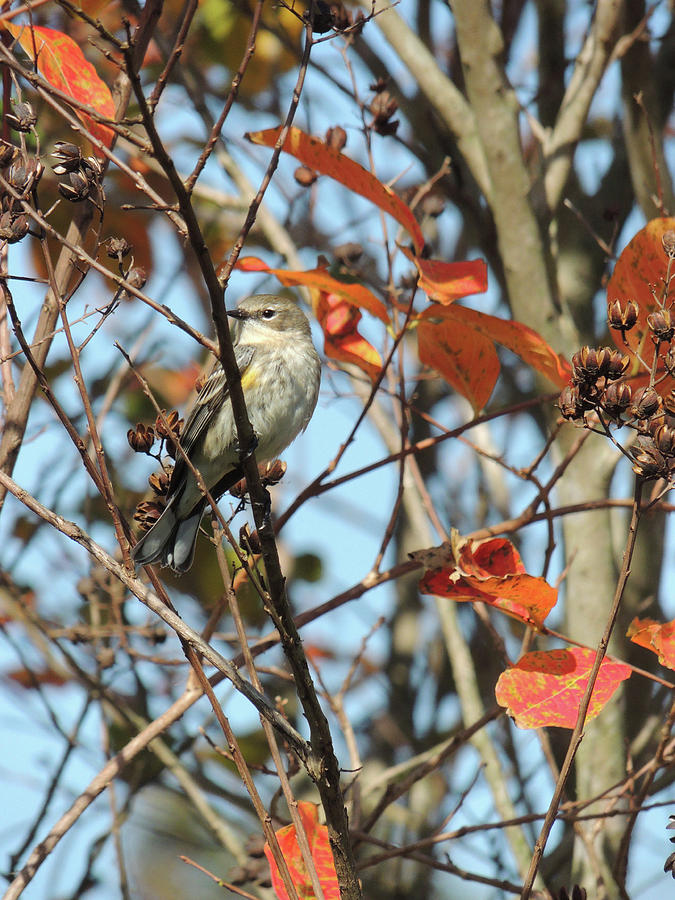

This species is closely related to the Green Warbler Finch, and were formerly considered conspecific, but both species differed in appearance, distribution, habitat, and song. Fledglings stay for up to 6 weeks with a parent, either with the male while the female starts a new clutch, or, one with the female and the other with the male. Its extinction across much of its former range makes the mangrove finch one of the most range-restricted birds in the world, with only around 100 individuals remaining. The plumage is plain looking and olive brown-grey in colour, paler underneath than above. During the spring, male American goldfinches are a brightly colored yellow with a black forehead, black wings with white markings. Some subspecies show a distinct pale eye-ring. Not found together with the very similar Green Warbler-Finch. button The mangrove finch feeds upon the various insects, larvae, spiders, and vegetable matter found in the mangroves. Bold black-and-white pattern of the adult male black-throated gray warbler’s head and the gray back suggest a chickadee. A closer look might reveal a half-ring around each eye.Species names in all available languages. There may be a yellowish tinge in the flanks of a bird that is facing you, but most of the breast is a drab white with some indistinct streaks. The yellow rump is about the only bright hue left on the bird, and it’s only visible when the bird is flying away. The fall plumage of a yellow-rumped warbler is annoying.

This ability to access more food helps them stay in Maine longer, even after some of the insect life has started to go dormant for the winter. A few warblers are better at hawking - flying out to catch insects on the wing. Most small songbirds hunt insects primarily by gleaning - poking among the leaves and needles, while looking for insects clinging to them. Yellow-rumped warblers are also among the most versatile foragers for insects. They even relish the berries from poison ivy and poison oak. They are the only warblers able to digest the waxy coatings on bayberries and wax myrtles, which are found in abundance along the yellow-rumps’ favorite coastal wintering grounds in the mid-Atlantic states. Yellow-rumps are champions at switching diets, and they can subsist on berries for long periods. 2.Įven though warblers are primarily insect-eaters, many can supplement their diets with fruit and weed seeds. During a Christmas Bird Count on Matinicus a couple of years ago, I encountered two on a frigid Jan. Some have even been known to winter in Maine, and even as far north as Newfoundland. They are abundant along the mid-Atlantic coast in winter, from Connecticut southward. Warblers that winter in the United States linger longer. Warblers bound for Central and South America are mostly gone by the end of September. Typically, birds that migrate the farthest leave the earliest. It sounds like “quip” or “twit.” When you get familiar with the sound, you become aware of just how many are still present in mid-October. The call note of a yellow-rump is unique. All warblers make tiny call notes, which keeps them in touch with their flock as they forage in the treetops. Not only are many of them still around, but they‘re also not shy about telling you where they are. Most warblers are gone now, save for the hardiest of the bunch: yellow-rumped warblers.

These two were the first I have seen on the lake in 18 years. There are thousands on Maine’s saltwater, but they’re only seen on fresh water when they briefly touch down in migration. Surf scoters are sea ducks that nest in northern Canada and winter along the Maine coast. I didn’t even have to leave my Adirondack chair to identify two surf scoters floating just beyond my dock last week - the 150th species of bird that I have seen on or near my yard. In fact, I have a black belt in porch-sitting. Frankly, some days all I have to do for inspiration is sit on my porch and do nothing. I’m often asked where I find inspiration to write a different birding column every week.


 0 kommentar(er)
0 kommentar(er)
